Bumblebees Forage on Monk Orchid Flowers. This green flowering Monk Orchid attracted many bumblebees foraging and a striped carder bumblebees.
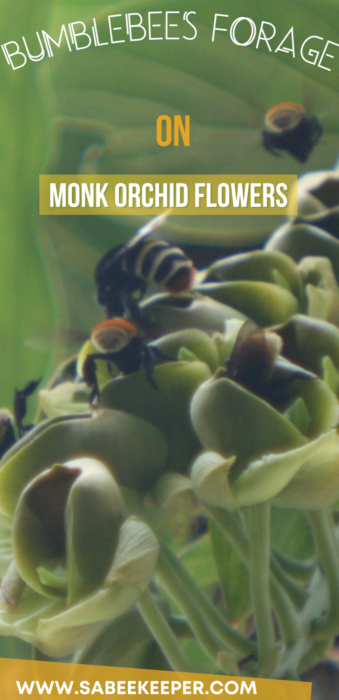
Green flowering Monk Orchid
Catasetum integerrimum species known as “Monk Orchids“ for its fragrant green and pale yellow flowers that look like hooded or cloaked monks, since they resemble praying hooded monks.
Below are ginger buff tailed bumblebees and a larger stiped carder bumblebee foraging on the green female monk orchids. They were like a swarm of bees diving inside the flowers.
Bumblebees Forage on Monk Orchid Flowers

This specie is used by Mexican indigenous in Quintana Roo to treat snake bites, in Tabasco to cure the new born and in Yucatan to remove tumors. According to this site (Orchid care)

This tropical orchid is native to the hot, humid forests of southern Mexico to Costa Rica, often appearing in coffee plantations. That is where we found it on a tree trunk. growing quit large. In southern Ecuador, the Chirusco valley near Vilcabamba Loja.
Growing on an Avocado tree in coffee plantation.
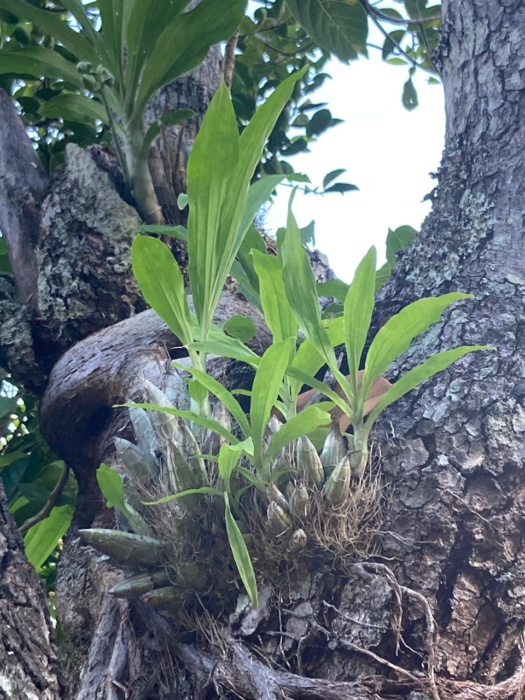
These flowers are green and are upside down, therefor can be described as a female flower. Giving off aromatic aroma and making the bumblebees crazy.
Bumblebees Forage on Monk Orchid Flowers
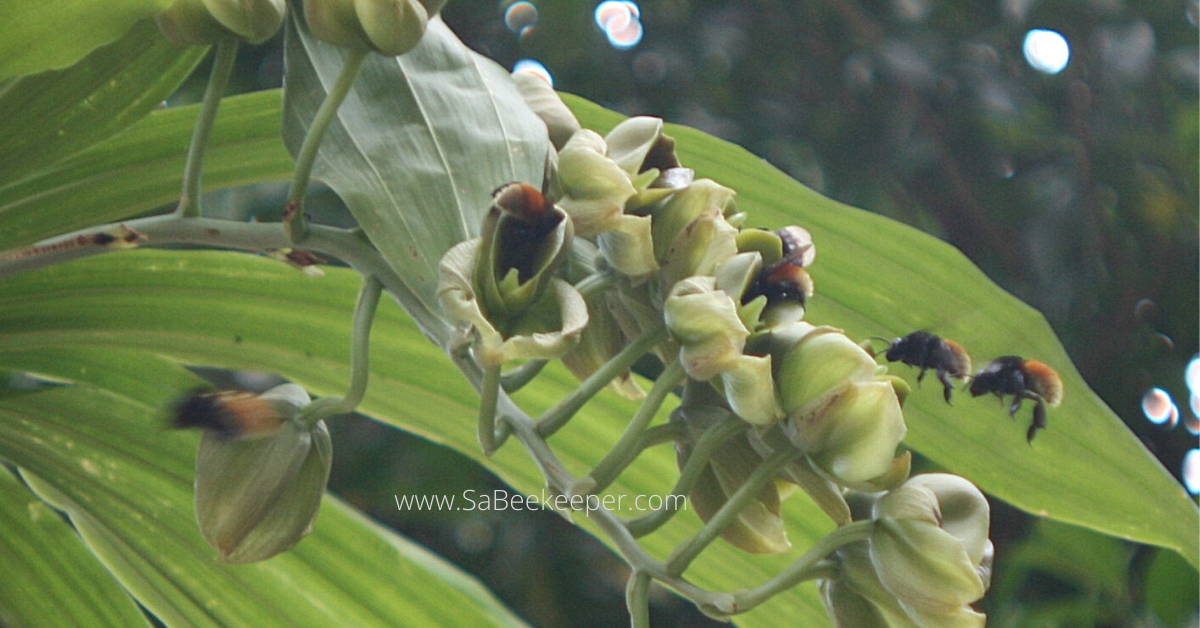
This plant is unique in having different gender flowers on the same plant. The male flowers have a trigger like that drops pollen onto the back of bees. Especially the larger bumblebee. They then find the female flowers that are very aromatic and unknowingly pollinate them. Male and Female flowers look different,
A flower stalk rises from the tip of mature pseudobulbs and carries either all male flowers or all female flowers. New flowers starting.
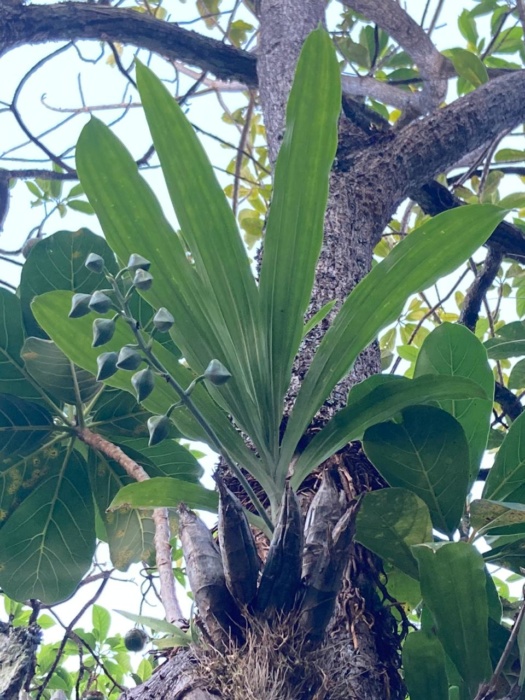
The male flowers are dull light yellow while the female flowers are green. The petals create an ominous, hooded flower face. Female flowers are also held upside-down, with the lip on the upper half of the blossom.
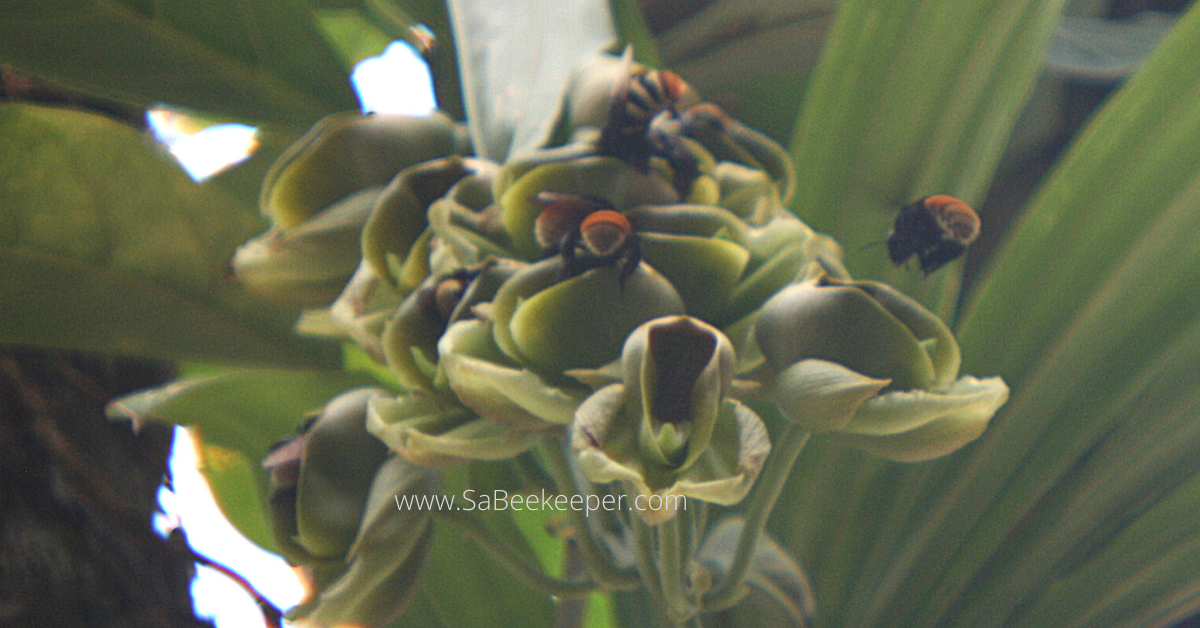
These common carder bumblebees are larger than a normal bee and pollinate larger flowers well. They vibrate more and the pollen gets attached to the fury hairs on its body. This way when they go to a female flower then the pollen is rubbed off unknowingly.
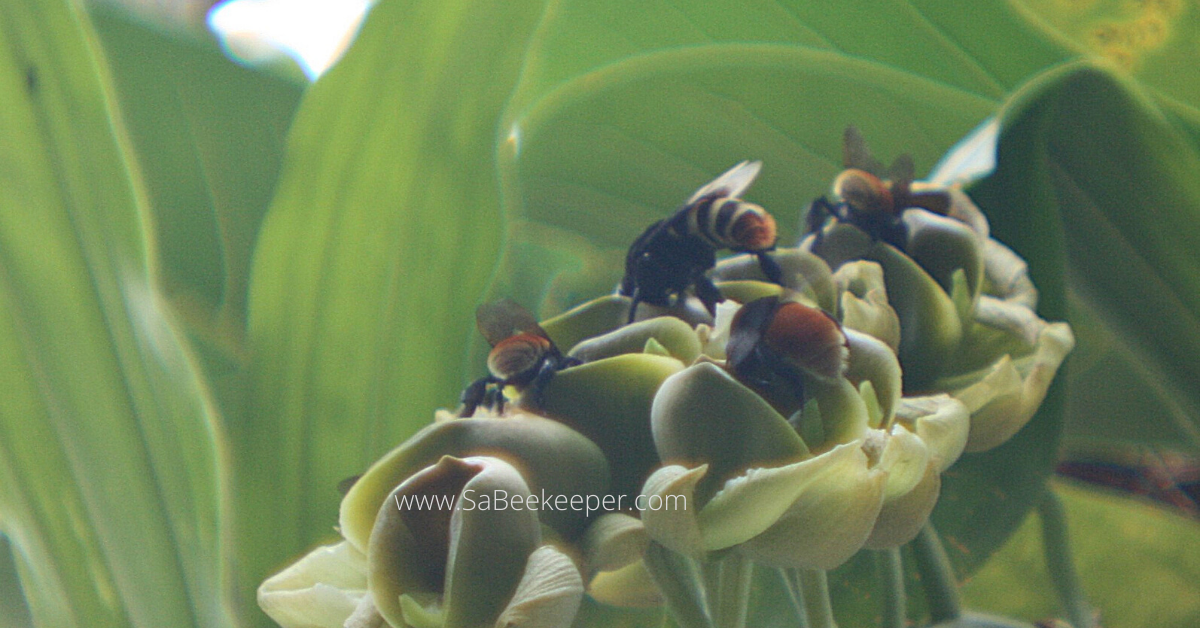
As you can see from the above photo a striped larger bee, its a carder bumblebee and the ginger buff tailed bumblebees.
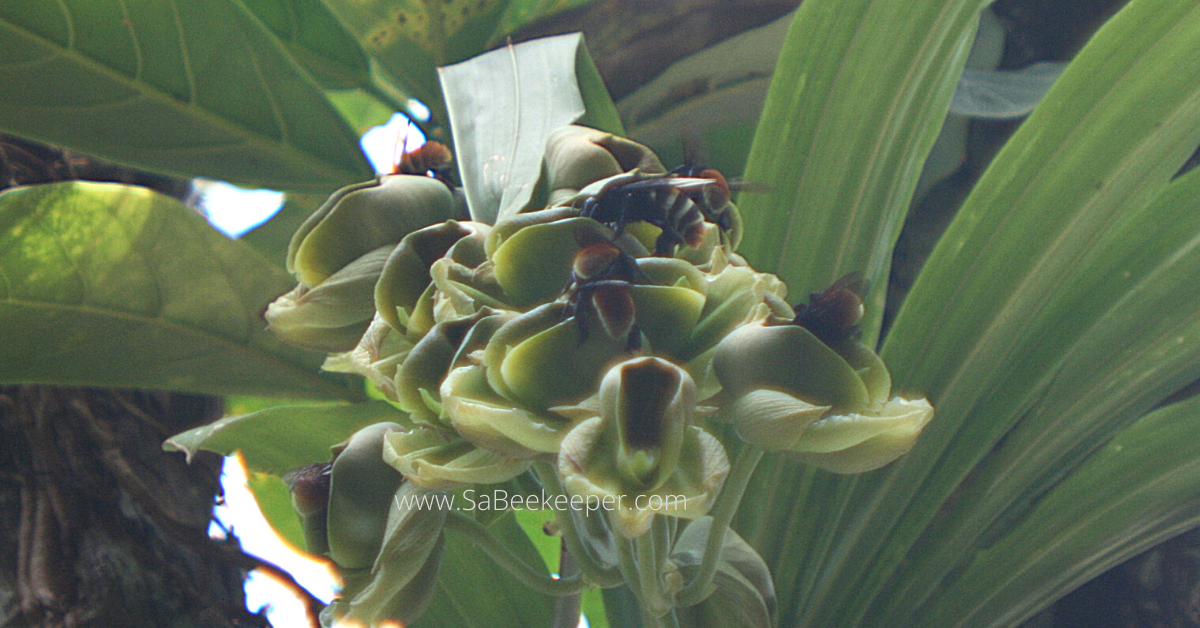
This was an amazing find, and watching the bees work these quit large green orchid flowers. The flowers didn’t last long, maybe a day or two.
Another post with these buff tailed bumblebees that were working on ground, you can read about it here below.
Ecuador’s Social Bumblebee at Work.
Since we have been living here in Ecuador, we have found many species of bees.
A video on u tube with these bumblebees and a carpenter bee foraging below.
Leave a Reply